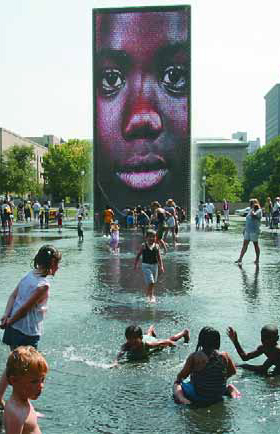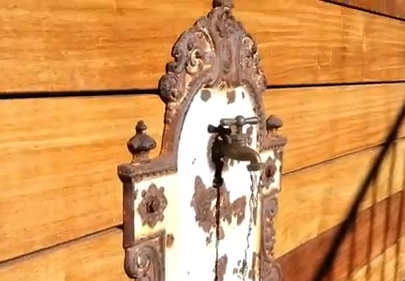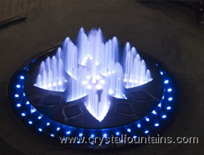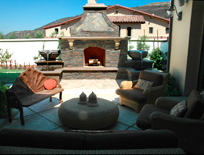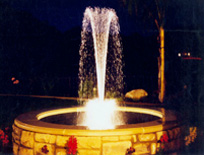Fountains
In July last year, the city of Chicago unveiled its newest civic landmark: Millennium Park, a world-class artistic and architectural extravaganza in the heart of downtown. At a cost of more than $475 million and in a process that took more than six years to complete, the park transformed a lakefront space once marked by unsightly railroad tracks and ugly parking lots into a civic showcase. The creation of the 24.5-acre park brought together an unprecedented collection of
Sometimes, it’s the unexpected that gives a place its true spirit. That’s been very much the case for The First Church of Christ, Scientist, a 1975 addition to Boston’s historic Back Bay district. The site features a campus plan devised by legendary architects I.M. Pei and Peter Walker, with grounds organized around a
Filling small courtyards and other compact spaces with the sounds of moving water is a valued service watershapers often perform for clients these days. A frequent approach in these cases involves installation of wall-mounted fountains in which water issues from a source set toward the top of the fixture and drops into a small basin from which the water is drawn and
I’ve been discussing watershapes with clients for about 25 years now, and it’s been a long time since I was surprised by any of the questions they’ve asked me along the way. I’ve noticed, of course, that in many cases I’ve been asked
As watershape design expands beyond the mostly recreational traditions of the recent past, more of us are being asked these days to design water elements that work more decoratively and serve to frame, reflect and otherwise accentuate or
From Wikipedia: "The Moonlight Rainbow Fountain is the world's longest bridge fountain...1,140 meters [1,247 yards] long, shooting out 190 tons of water per minute." Wikipedia also reports that the
Toronto-based Crystal Fountains has designed a dramatic, multifunctional waterfeature for White Square Office Center, a major new commercial development in Moscow. The company describes
In creating waterfalls, some watershapers don’t seem to realize is that you can precisely control the sound the falling water makes as it descends from level to another. My goal in paying attention to this detail is to take advantage of
This lesson involves the performance of a simple but elegant aboveground fountain. As is true of all watershapes, fountains need to be built in such a way that they reliably hold water and don’t leak. That’s an obvious given, of course, but water being the clever devil it is, if you miss
Part I: Setting the Course Theatrical vitality has to do with structuring stories and creating dramatic narratives that establish sensations of expectation, surprise and reward. It also involves the development of sympathetic, interesting characters as well as engagement in “the moment” – the feeling that a special and wonderful entertainment experience is unfolding before the audience in a specific time and place. Mastering all of that is a tall order under ordinary circumstances, so you can imagine how we felt in trying to help make it happen on the exposed, unpredictable stern deck of Oasis of the Seas – a prestigious ship that currently claims the title of world’s largest cruise liner. Fluidity – a Los Angeles-based water design studio – pursues unique, progressive projects for an international clientele that includes architects, landscape architects, civic institutions and real estate developers. Through the years, we’d had considerable experience with theatrical










